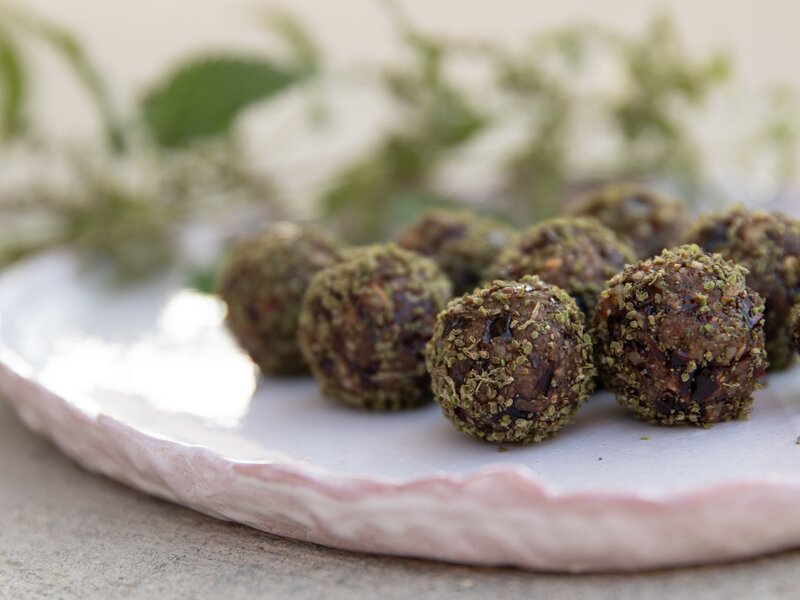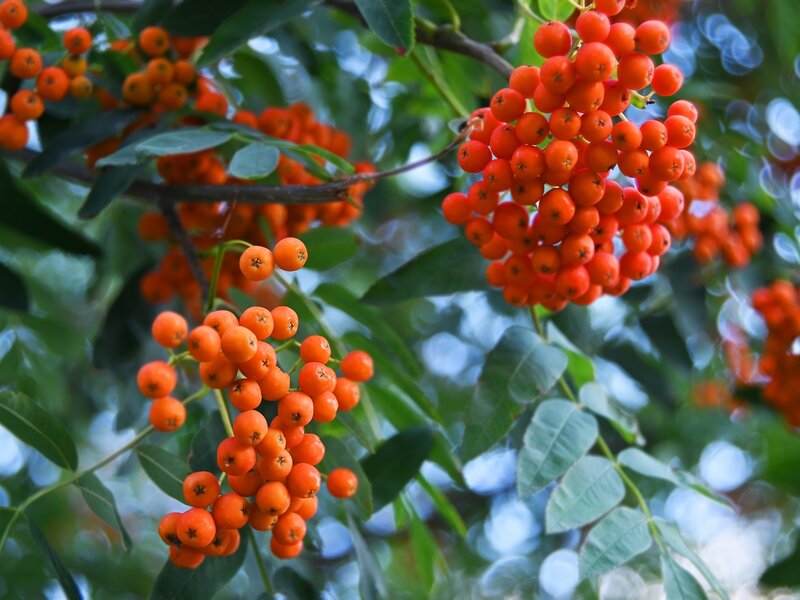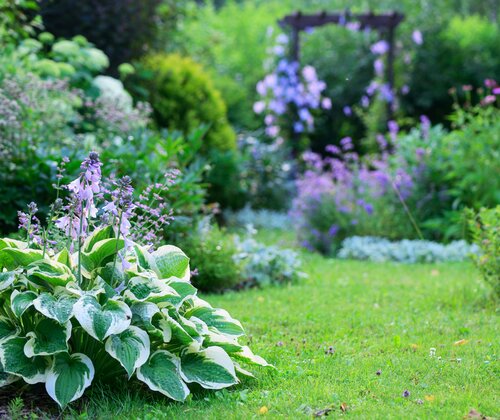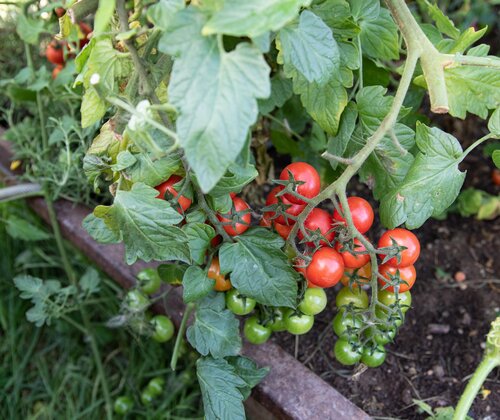
Wild harvest in autumn
Autumn is a wonderful time to explore nature and to take advantage of the healing powers of plants. As nature prepares for winter, the plants draw their strength back into the seeds, fruits and ultimately the roots. Like nature, we too can prepare for the colder time of year. By collecting, processing and enjoying them, we can recharge our batteries and find peace. In this article, we will show you which plants can be collected in autumn and how to process them.

Stinging nettle (Urtica dioica) and its energy-rich seeds
The stinging nettle is not only a popular wild herb in spring, but is also invaluable in autumn. In particular, the seeds of the female plants, which can be collected from the end of July to the end of October, contain many valuable nutrients. In contrast to the male seeds, which are light green and stand out horizontally from the stem, the female seeds are dark green or already slightly brown in colour and hang down in dense bundles.
Harvesting and storing
It is best to harvest on a sunny, warm day around noon when the seeds are dry. This will help you avoid mould. Carefully cut the seed clusters or strip them from the stems with your fingers. Then dry them for 3-5 days, sieving them through a sieve, and store them in a dark screw-top jar. You can use this local superfood in muesli, smoothies, salads, sauces, or spreads, and much more in the kitchen.
Nutrient-rich supplement
Before consumption, the seeds should be ground in a mortar or finely ground to release the ingredients. Nettle seeds are rich in protein, vitamins (A, B, C, E), minerals such as potassium, iron and calcium, and linoleic acid. They strengthen the immune system and can help with fatigue, poor concentration, digestive problems and high blood pressure.

Energy Balls with stinging nettle seeds
100 g grated walnuts
180 g dried plums
1 tbsp oats
1 tbsp nettle seeds
1 pinch of salt
Nettle seeds for rolling
Put all the ingredients in a blender and mix well. Take some mixture out with a spoon and shape it into a small ball. This is easier if you moisten your hands a little with water.
Finally, roll the balls in nettle seeds. Done!
The mountain ash (Sorbus aucuparia)
The bright red berries of the mountain ash, also known as rowan berries, are a real eye-catcher in autumn. The berries should not be eaten raw, as they can cause stomach problems. They can be used in a variety of ways after cooking, as this process destroys their harmful parasorbic acid. It is best to harvest the ripe berries after the first frost, when they are slightly milder and less bitter, or put them in the freezer for a few days, which has the same effect.
Versatile processing options
Rowan berries are particularly rich in vitamin C, which is retained even after cooking. They are suitable for making jam, puree or juice. When combined with apple juice, a sweet and sour juice is created, which should be boiled.
Healing properties
Rowanberry puree promotes healthy intestinal flora and supports the body after taking antibiotics. It can be used to treat loss of appetite, stomach upset and to strengthen the lungs. The berries have an overall strengthening and invigorating effect on the body.

Common avens (Geum urbanum)
The avens, also known as Geum urbanum, is a common herb that is used both in cooking and in natural medicine. The roots of the avens can be harvested from September to February. Their intense clove aroma makes them a prized spice.
Culinary and medicinal uses
The leaves of the avens, which remain green even in winter, can be finely chopped and added to vegetable dishes or herb quark. The root, on the other hand, is valued for its aroma and healing properties. It contains eugenol, which is also found in cloves, and helps the body to excrete toxins and heavy metals. Thanks to its ingredients, it also strengthens the heart and nerves.
Harvesting roots properly
The root is harvested from September onwards, when the above-ground part and the vital substances of the plant begin to withdraw. You can find the clove root in semi-shaded areas along paths, in deciduous and mixed forests, or on fallow land. It can be dug up very easily with a small shovel or simply with your hands. You can tell that you have the right root in front of you by the distinct smell of cloves and the purple colour. Clean, cut and dry the harvested root or process it fresh into carnation root punch.
Punch with common avens
1 litre apple juice or a fruit blend (apple and redcurrant or apple and elderberry)
1 tbsp fresh or dried garden avens
1 organic lemon
1 cinnamon stick
honey to sweeten
Heat the apple juice, lemon juice and zest in a saucepan. Add the garden avens and cinnamon stick in a tea bag and bring to the boil briefly. Then leave to infuse for 10 minutes and sweeten to taste.
1 litre apple juice or a fruit blend (apple and redcurrant or apple and elderberry)
1 tbsp fresh or dried garden avens
1 organic lemon
1 cinnamon stick
honey to sweeten
Heat the apple juice, lemon juice and zest in a saucepan. Add the garden avens and cinnamon stick in a tea bag and bring to the boil briefly. Then leave to infuse for 10 minutes and sweeten to taste.

The sun is merciless, the thermometer rises to over 30°: shady spots offer both us and many plants a welcome respite from the heat - many plants even flourish in the shade. Make the most of the sun-free spots in your garden or on your balcony. We'll tell you which flowers, perennials and shrubs thrive particularly well here. And because a dip in your own pond is also refreshing, you will find tips here on how effective microorganisms can help you keep your pond clear all year round.

Without a doubt, the (mostly) red fruits are one of the undisputed favourites on the summer plate. To enjoy your own harvest well into the autumn, you need to pay attention to a few things. Our tips will help you keep your tomato plants healthy.

After all, it is the flowers that make gardeners' hearts beat faster. However, many a greenkeeper prefers a fine, even English lawn, perfectly trimmed with a velvety surface. In this article, Barbara Enengel reveals how you can get your lawn in top shape in an ecological and sustainable way.
